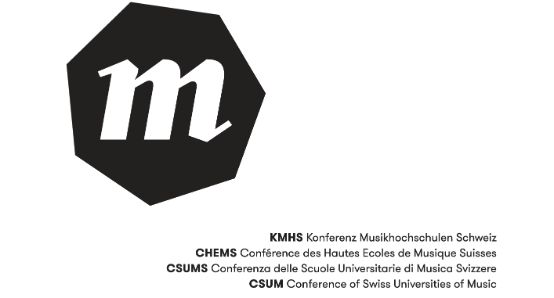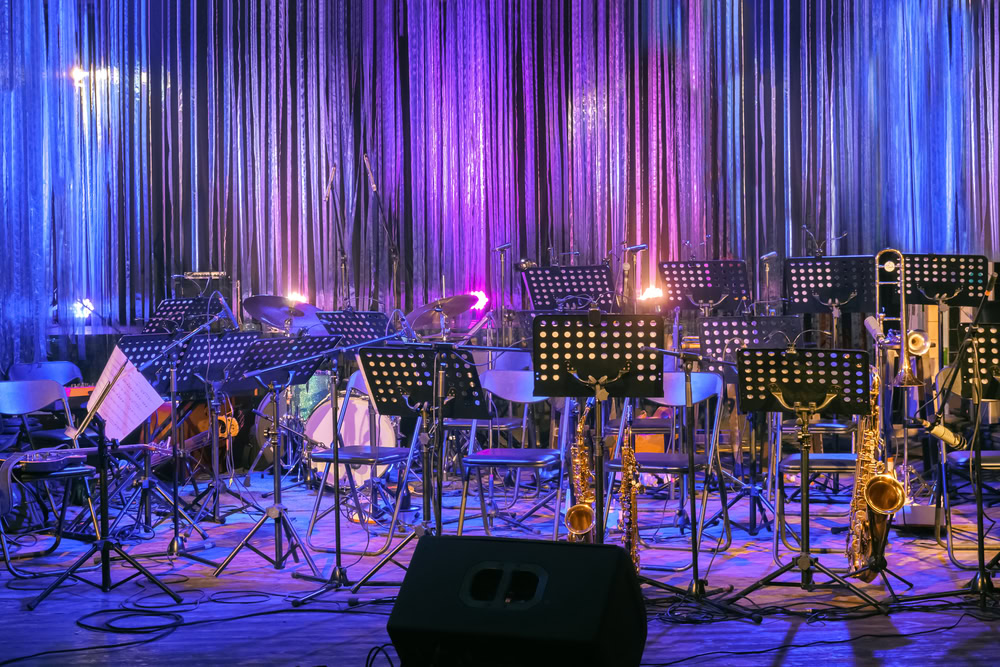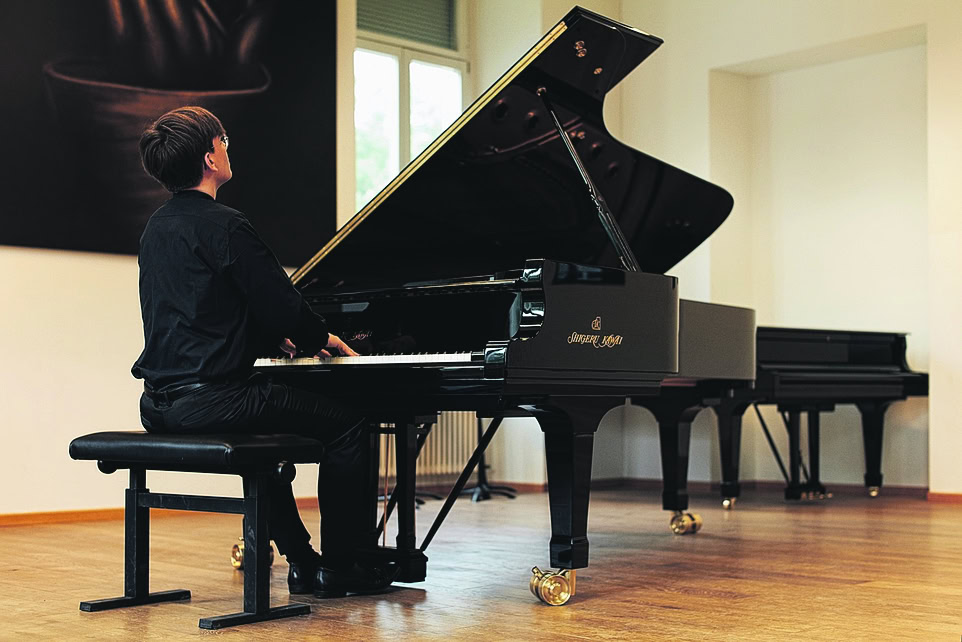Digitization and music academy
It was once said that digitalization was destroying the music industry. It is now clear that digitalization has also rebuilt it. What role do the new technologies play in education? This and the following issues will explore this question, starting with impressions from the Kalaidos University of Music and the University of Music FHNW Basel.

Ingo Laufs - You really can't complain that the term "digitization" is rarely used in everyday language. What possible applications, what developments and what advantages are conceivable for studying at a university of music through digitalization? The Kalaidos University of Music explored this question by putting the entire complex of music theory to the digital test, so to speak.
In the course of a long working phase, a system was developed for the individual areas of music theory (composition, ear training, aural analysis and stylistics, form theory and analysis, acoustics, instrumentology and music history (with adaptations in the jazz/pop area)) that combines several types of teaching. Each of the areas mentioned consists of teaching units with different weightings and different ECTS credits, and each teaching unit consists of a complex of individual lessons, group lessons, lessons with lecturers and lessons without lecturers as well as a relatively high proportion of self-study.
The teaching material is available to the participants for a certain period of time via the in-house communication portal; this means that students can access it again and again and use it as support. The majority of this situation will be taught online, and examinations will also be possible in this way. Students will therefore soon be able to receive their theory lessons and write their exams in the comfort of their own living room or study - which is by no means synonymous with a lack of control. Monitoring means tracking learning progress, ensuring progress in mastering the subject matter, i.e. support that goes beyond differentiating between "correct" and "possible" or even "incorrect" solutions. The latter can be easily solved technically by making the possible solutions visible to the learner. On the other hand, annotated feedback is necessary; it must be possible to understand right and wrong within an aesthetic frame of reference. Together with some of its cooperation partners, the Kalaidos University of Music will be testing this version, which has so far only been tested with individual, voluntary students, from April.
Another possible use of digital media that could certainly be discussed would be the recognition of video recordings or links to YouTube recordings as an admission test in the artistic field. There are certainly many advantages to being physically present, the live sound, the personality. All of this is more perceptible when you are sitting opposite each other. But in the age of digitalization and globalization, isn't it also permissible not only to think about how these developments can be used for studying at a conservatory, but also to apply them, even if only on a trial basis? If you don't try, you can't refuse. And so the Kalaidos University of Music, which has long accepted entrance examinations via YouTube when they are submitted by students from distant countries, has decided to accept this form of application and participation in its scholarship competition as well.
The opportunities of digitalization for a music university are therefore clear. On the one hand, digitalization makes it possible to prepare the teaching content in a clear way: On the one hand, images, sound and analysis can be brought together and the aspects to be taught/learned can be focused and pointedly prepared using the examples. On the other hand, this content can remain permanently accessible beyond the duration of a traditional lesson. This extends the learning time. Blended learning can therefore lead to a more in-depth form of learning.
Of course, the risks must also be considered. These consist of presenting teaching content in a way that is too distant from people and is almost exclusively reduced to what is technically feasible. The risk lies in wanting to make the human being - and therefore the teacher - superfluous. This will not succeed. The subject matter is too complex, and the teacher is a point of reference whose function should not be underestimated. Teaching is given a "face". Often - especially with creative tasks - problems arise that go beyond the "realization of sounds". This is where personal contact and support are essential.
Of course, students must also have the appropriate technical requirements. This depends on the format of the digital media. For example, there are programs available for purchase in the field of ear training (Earmaster), for which group licenses are issued to the universities. A computer with headphones is required for this, and a microphone is also necessary for the topic of "sight-singing". For most cases, however, the basic equipment should suffice, i.e: Internet access, computer with audio and video function, email access, because teaching must succeed with those possibilities that students usually have at their disposal without having to go to great expense. For their part, universities need teaching and learning platforms that allow students to access the content.
Ingo Laufs
... is head of department and lecturer for composition, analysis, theory of form, arrangement and composition at the Kalaidos University of Music.
Elke Hofmann - The innovative use of digital technologies in teaching has become an attractive feature of a university. The realization of the old dream of making teaching more flexible in terms of time and location is a blessing wherever knowledge needs to be imparted to as many people as possible in an individualized way. At the same time, it poses immense challenges, both for decision-makers when it comes to investing in rapidly outdated technologies and for teachers, who have to continually adapt their media and teaching skills to the requirements of the younger generation of students.
The digital transformation poses different questions and challenges for the traditional, highly individualized forms of teaching in professional music education than for typical university knowledge transfer.
Even with the help of the latest digital technologies, physical presence, which is essential for conveying the artistic and technical essence of mastering an instrument or voice or the creative process of improvisation or composition, cannot yet be transferred in a satisfactory form. The tempting flexibility in terms of time and location does not (yet) appear to be achievable, particularly in the core business of a music academy, i.e. individual artistic tuition and accompanying small group lessons. So far, the attraction of the main subject teacher, together with the attractiveness of the campus with regard to further practical experience in the chosen main subject or its specialization, has remained decisive for the choice of study location.
Looking back on the developments of the last two decades, it seems only a matter of time before this paradigm will also change; existing technologies are being intensively researched throughout Europe and are already generating a new culture of musical interaction.
Digital media have long been part of everyday life at the FHNW Academy of Music/Basel Academy of Music: students and teachers play from digitally represented sheet music on tablets, use online library catalogs and academic research portals and make their own musical and/or academic work visible and audible on websites or social media using digital video and audio recordings or live streaming.
Within traditional forms of teaching, teachers are developing digital tools for teaching special content (e.g. intonation/voice systems) and testing digitally supported examination formats; education students are working on the didactics of teaching videos. Learning management systems and collaborative digital group rooms enable new qualities in the use of contact time.
As one of nine universities in the University of Applied Sciences and Arts Northwestern Switzerland network, the FHNW School of Music/Music Academy Basel is also located in an environment that is intensively involved in the transition of teaching to the digital future. In the coming years, the FHNW will set up special rooms for its nine universities that will enable their teachers to try out digitally supported forms of teaching, provide impetus for the development of digital and media pedagogical skills, develop a platform for the presentation of innovative teaching and promote discourse on the idea of the future of excellent teaching. In doing so, it aims to meet the different needs of the sub-universities and at the same time exploit interdisciplinary synergy potential. The FHNW offers teaching staff competitive incentives to implement individual projects; for example, David Mesquita and Florian Vogt from the Schola Cantorum Basiliensis at our university won one of the first grants from the Teaching Fund for their project "Singing upon the (note)book", in the context of which an interactive website on certain aspects of historically oriented aural training is being developed.
The FHNW Academy of Music/Basel Academy of Music thus sees itself as part of a comprehensive process that will prudently lead the proven excellence of its teaching into a successful future.
Elke Hofmann
... has been the Digitalization Officer at the three institutes of the FHNW School of Music Basel since September 2018.








